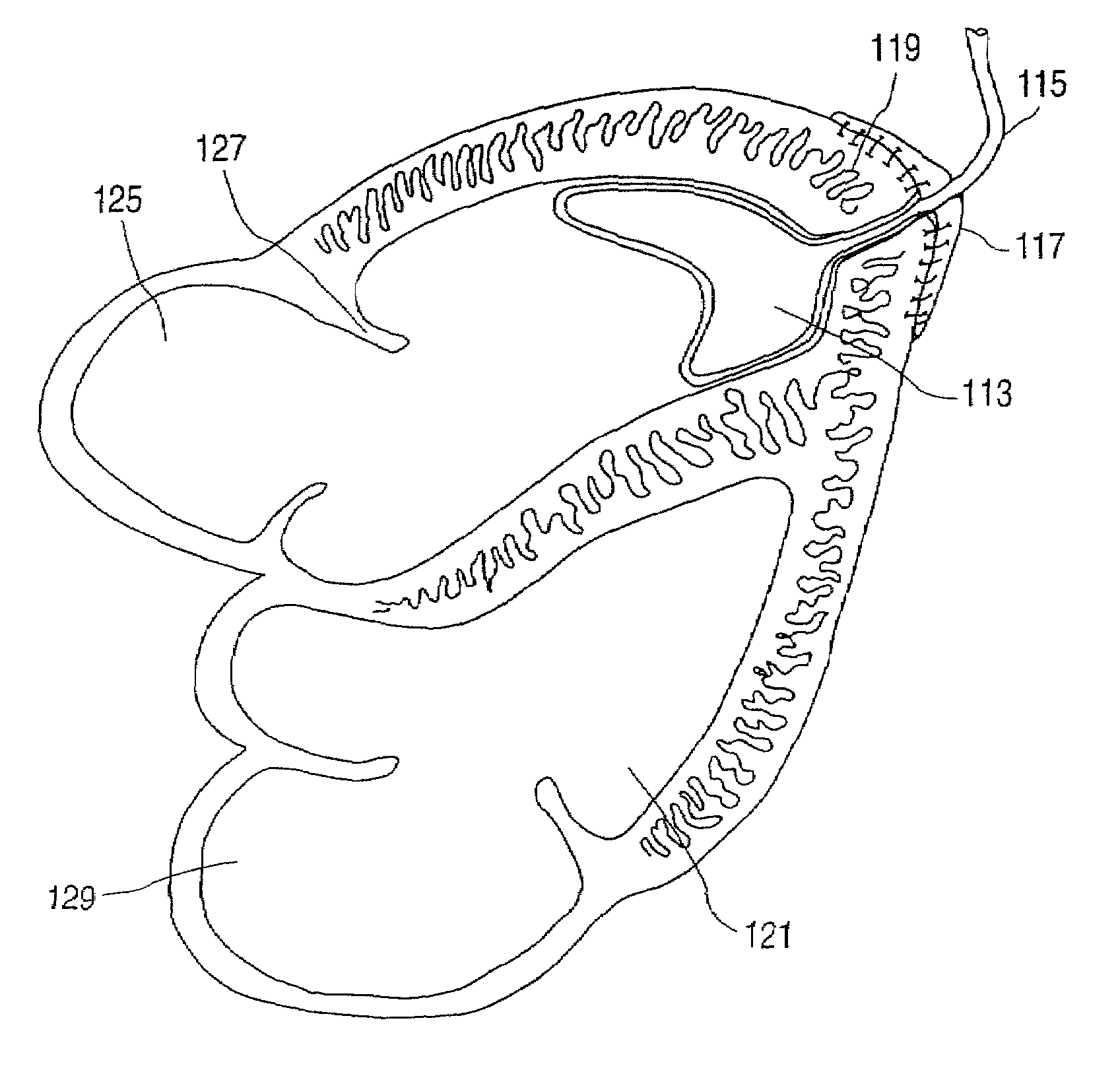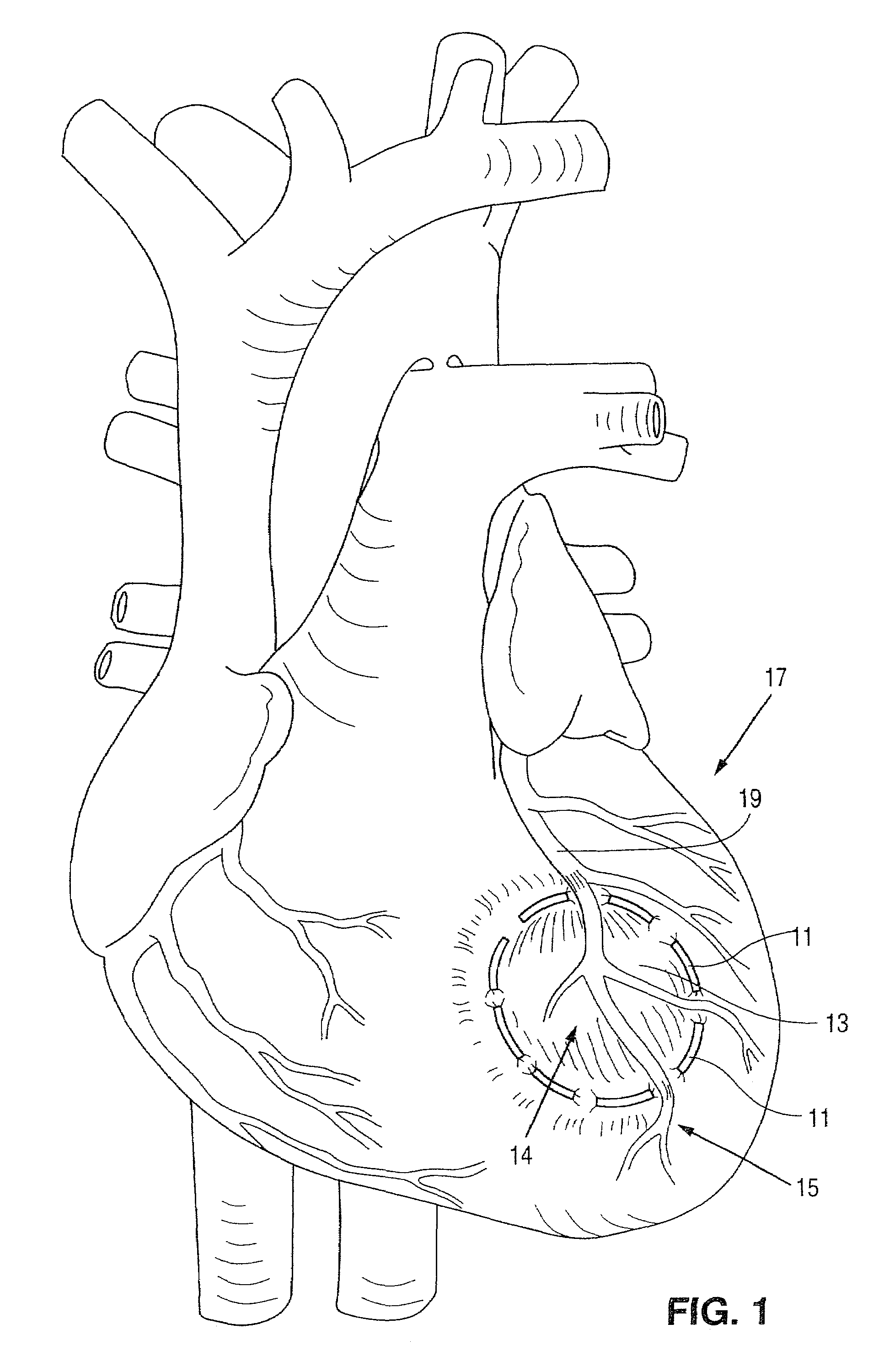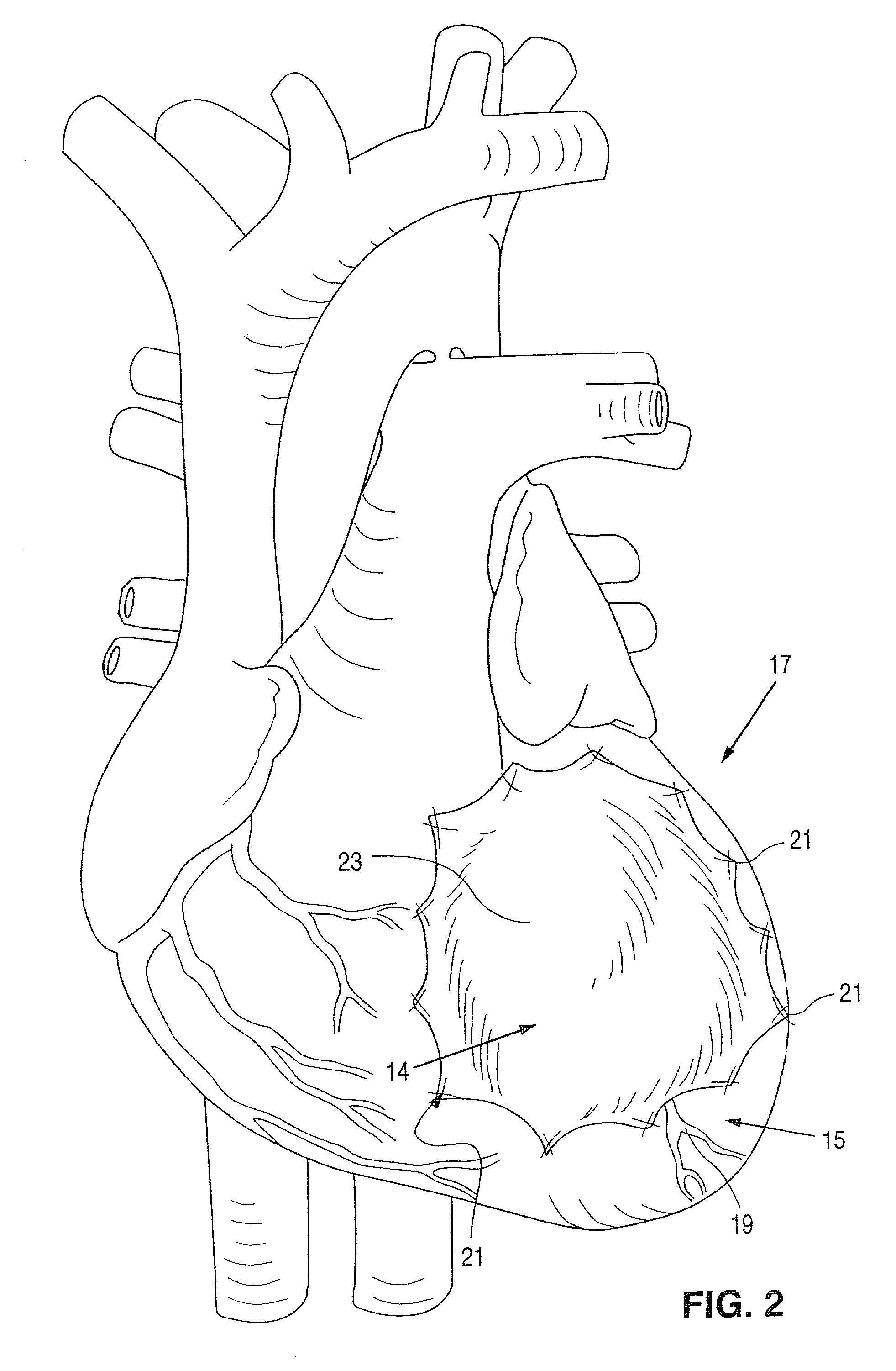Surgical procedures and devices for increasing cardiac output of the heart
a technology of cardiac output and surgical procedures, applied in the direction of heart stimulators, prostheses, therapy, etc., can solve the problems of heart failure, congestive heart failure, most often in the elderly, and the cost of treating patients through surgery is enormous, so as to reduce the available blood volume of the chamber, the effect of reducing the volume of the chamber
- Summary
- Abstract
- Description
- Claims
- Application Information
AI Technical Summary
Benefits of technology
Problems solved by technology
Method used
Image
Examples
Embodiment Construction
[0047]The devices and methods of the present invention will be described with reference to the attached drawings. By way of illustration and example, the devices and methods of the present invention will be described for use to increase the output of the left ventricle of the heart. However, it is to be understood that the present invention can also be configured to increase right and left atrial functioning of the heart as well as the right ventricular functioning.
[0048]It has been found that a localized restriction on the muscle of the heart can increase the blood flow from the heart out the bloodflow tract. A “passive” ventricular assist device constructed in accordance with teachings of the present or a method of“passively” assisting cardiac function augments cardiac function without mechanically assisting the physical contraction or expansion of the heart muscle. Several embodiments of the present invention apply a restriction on the motion of the heart muscle to compensate for...
PUM
 Login to View More
Login to View More Abstract
Description
Claims
Application Information
 Login to View More
Login to View More - R&D
- Intellectual Property
- Life Sciences
- Materials
- Tech Scout
- Unparalleled Data Quality
- Higher Quality Content
- 60% Fewer Hallucinations
Browse by: Latest US Patents, China's latest patents, Technical Efficacy Thesaurus, Application Domain, Technology Topic, Popular Technical Reports.
© 2025 PatSnap. All rights reserved.Legal|Privacy policy|Modern Slavery Act Transparency Statement|Sitemap|About US| Contact US: help@patsnap.com



